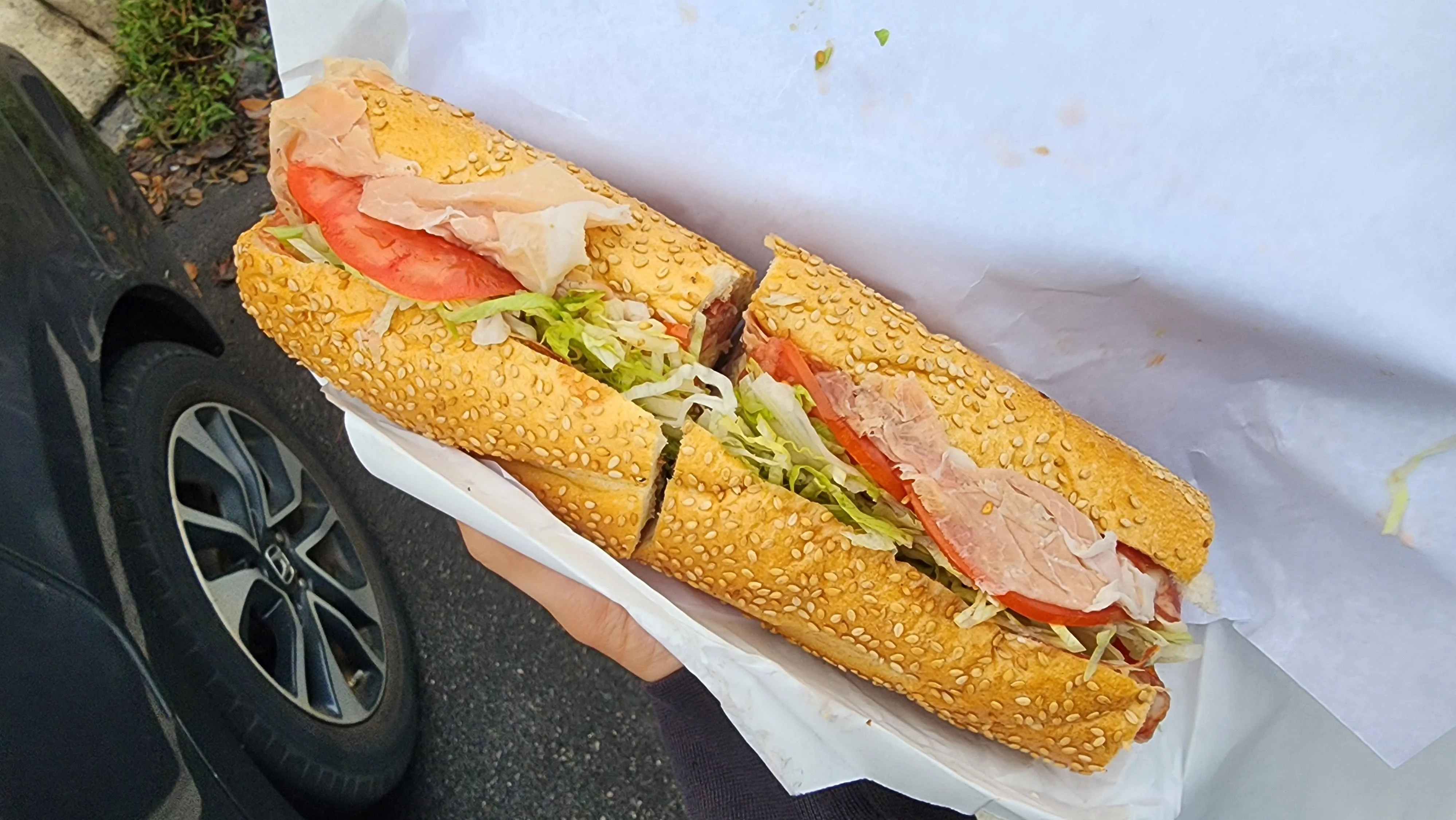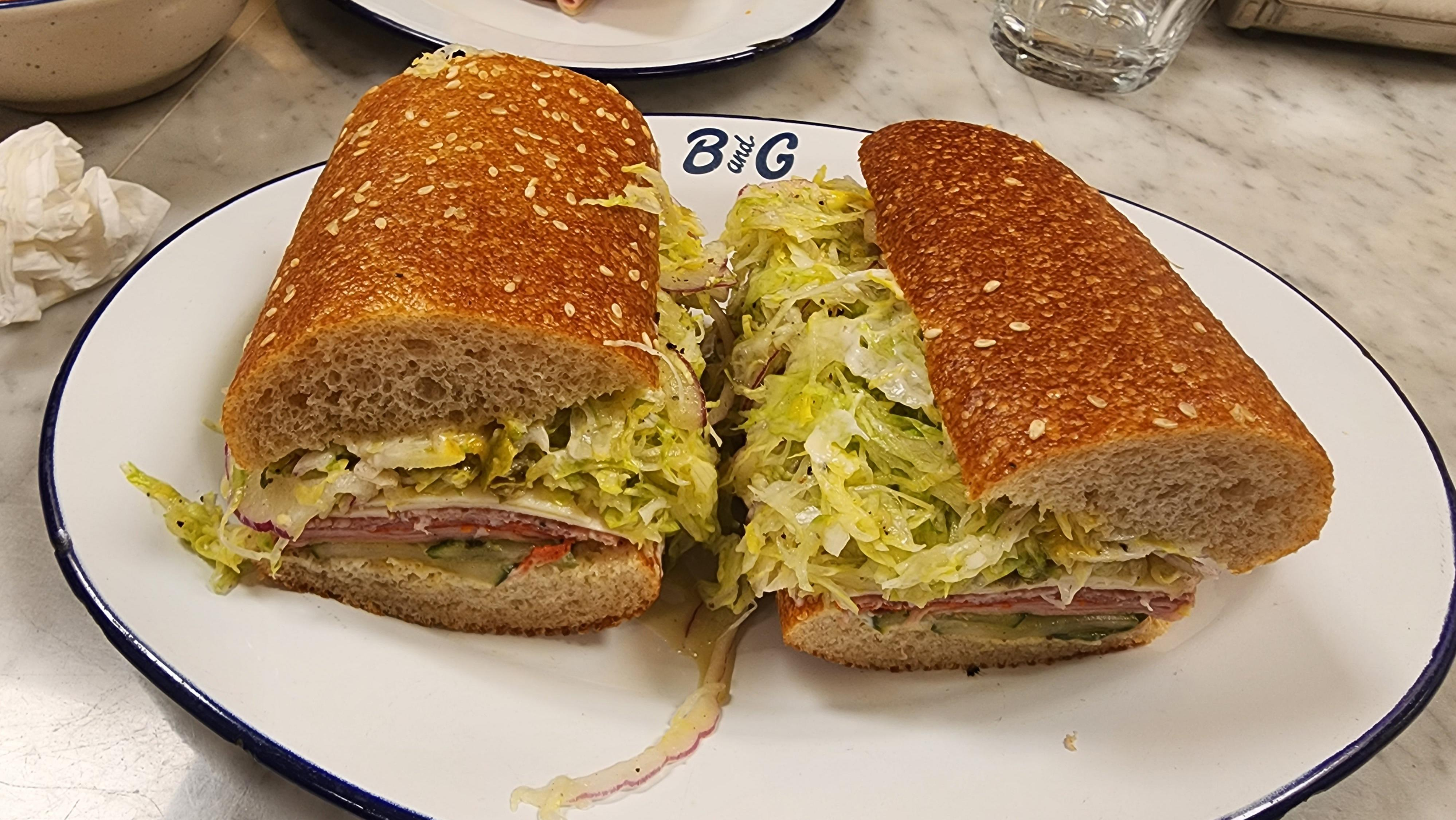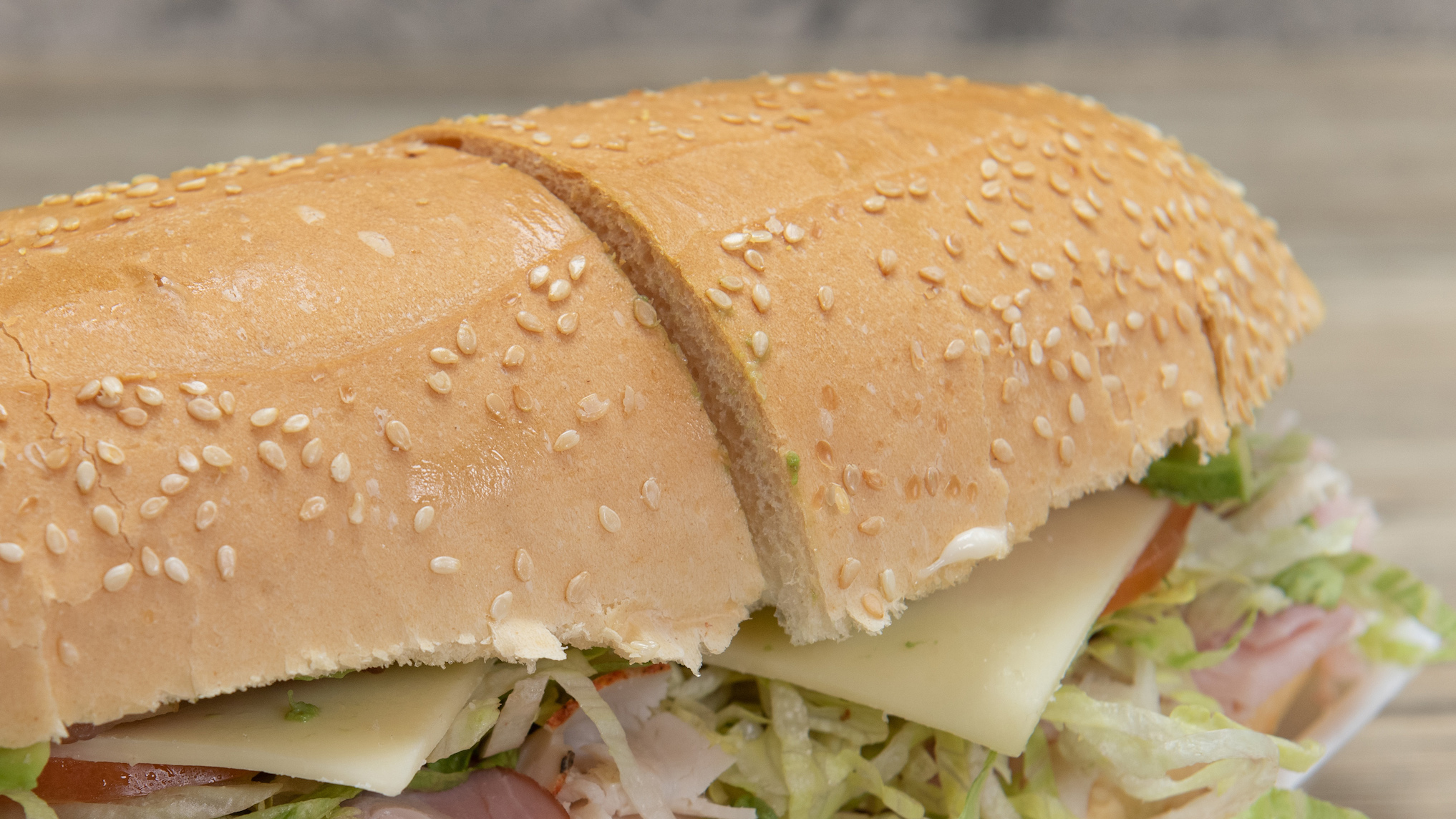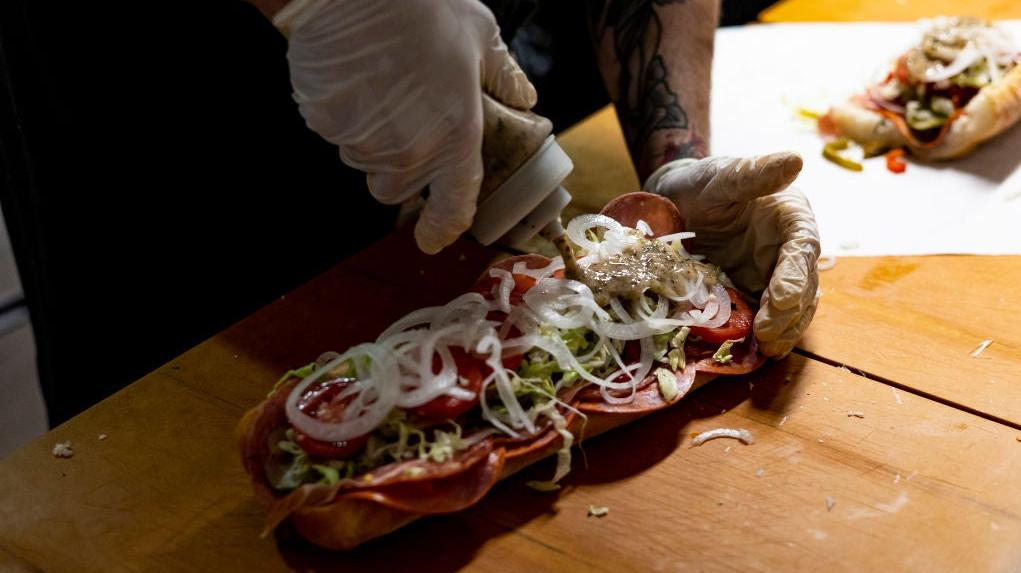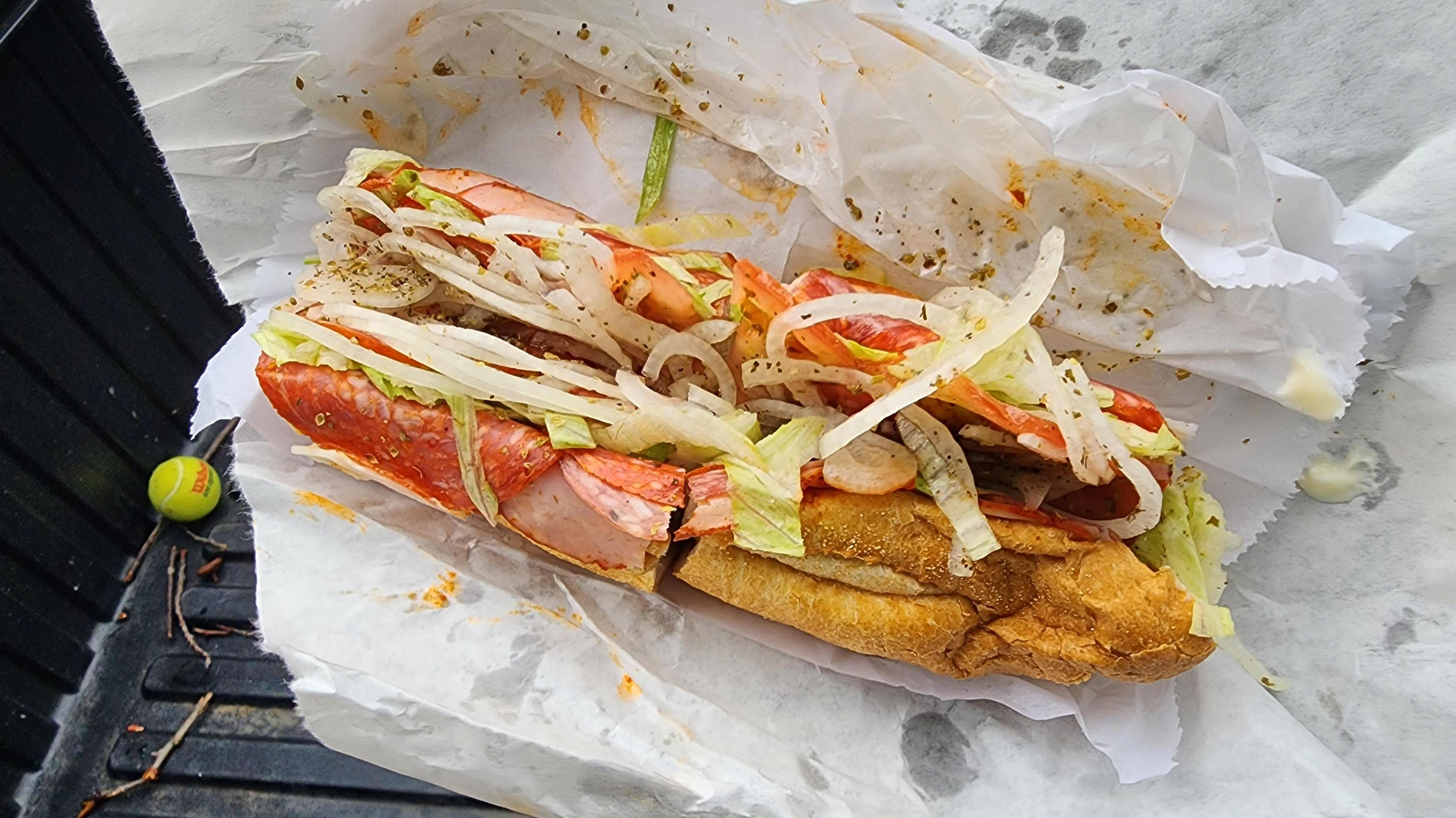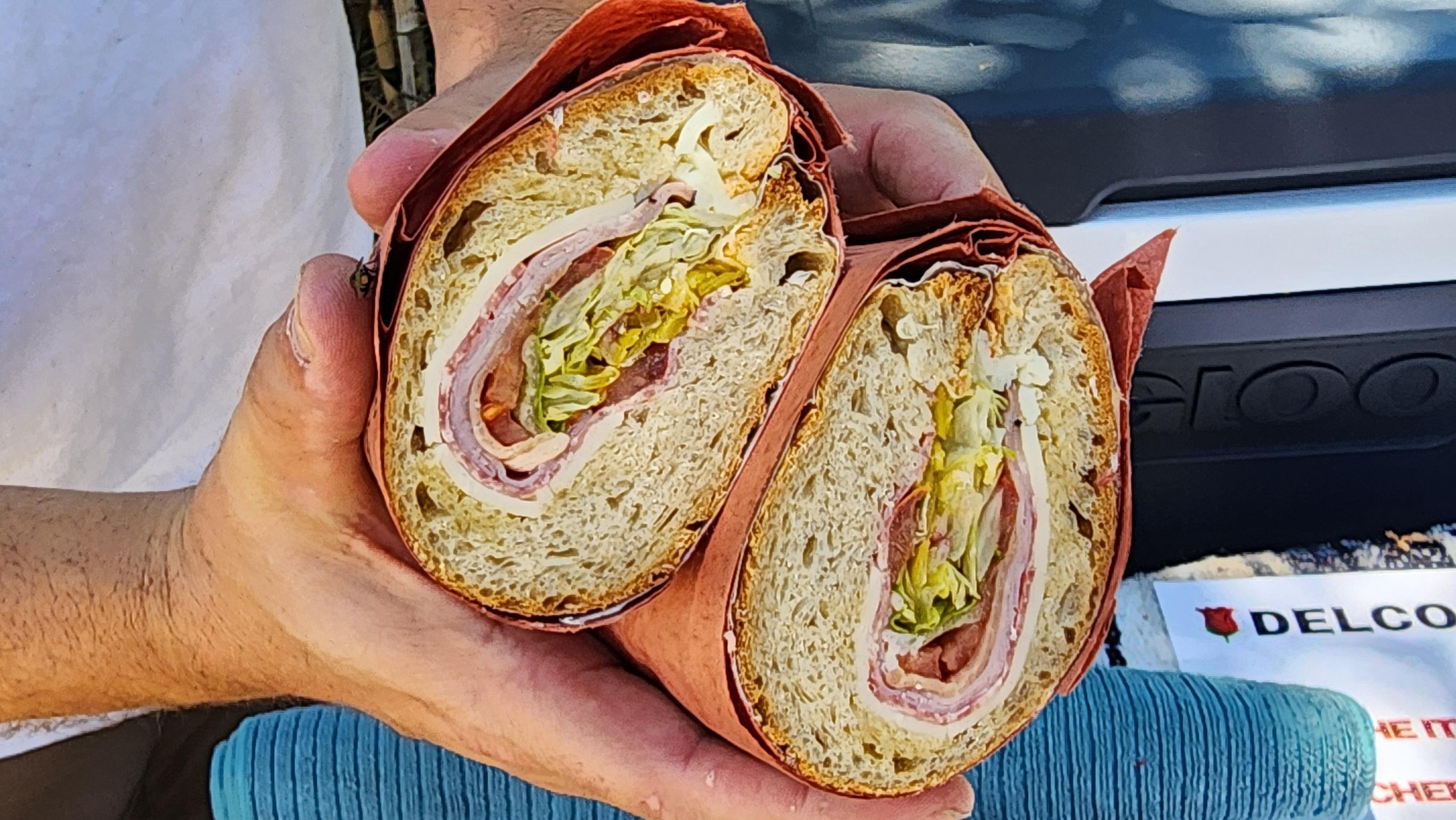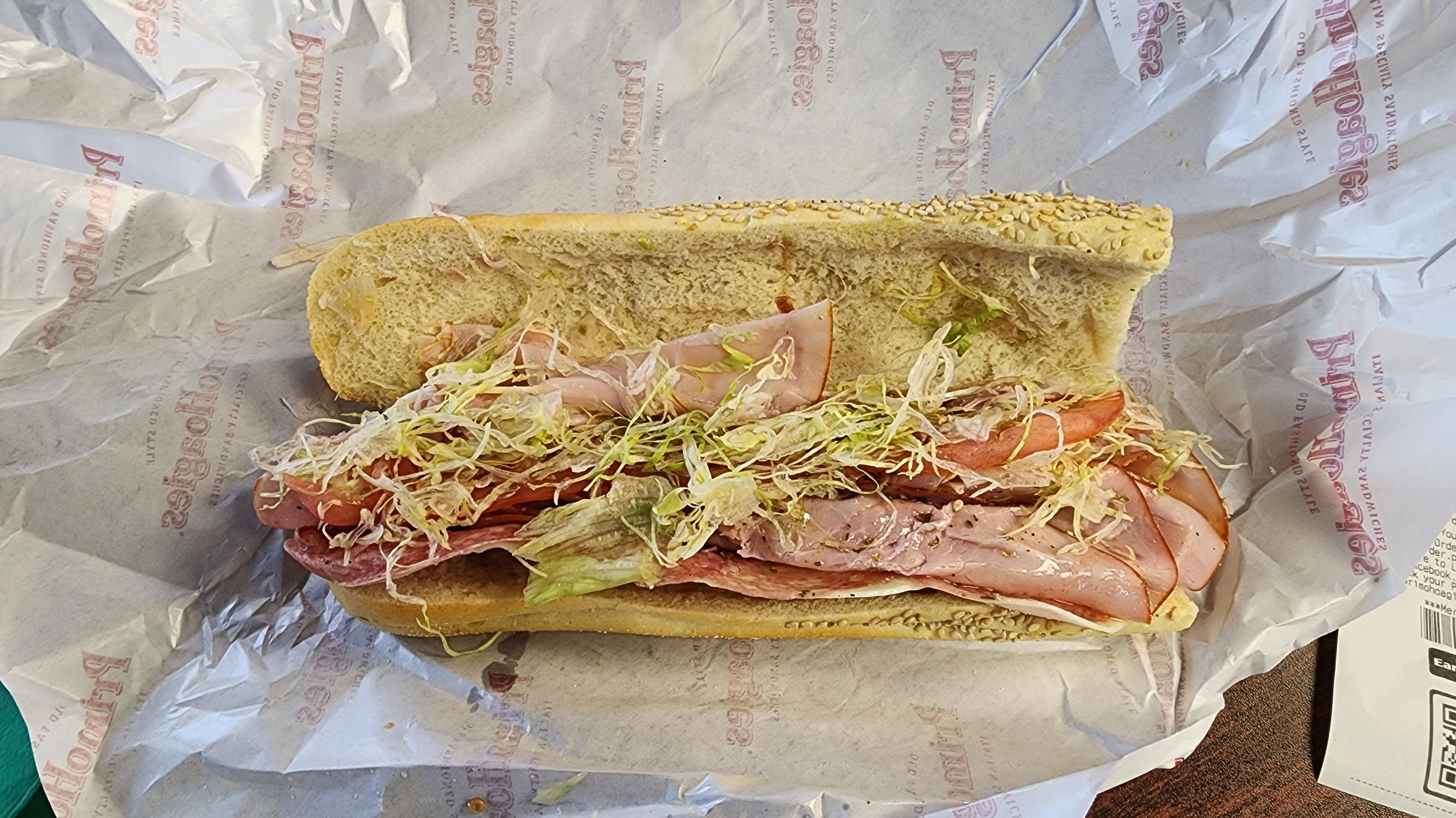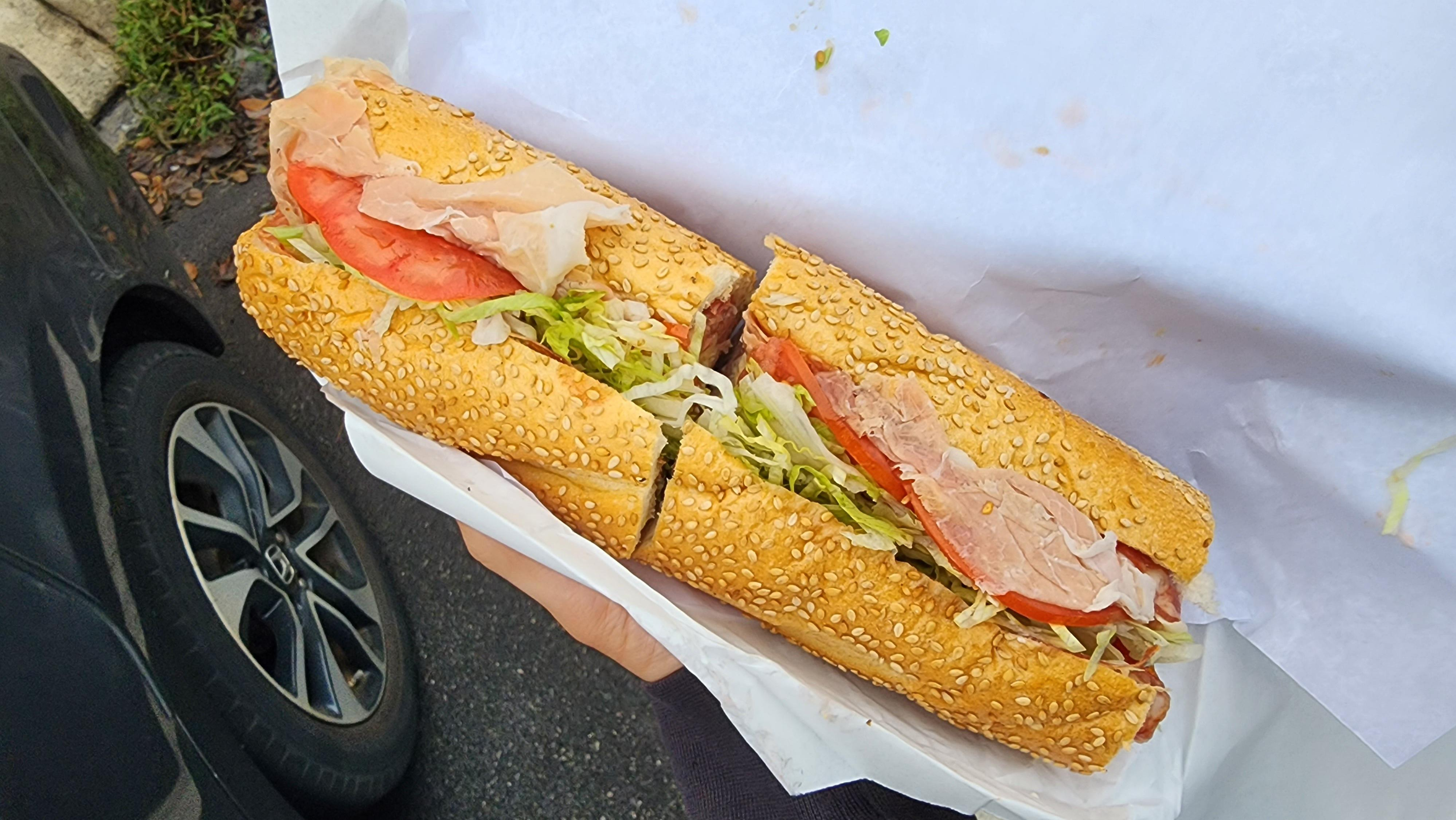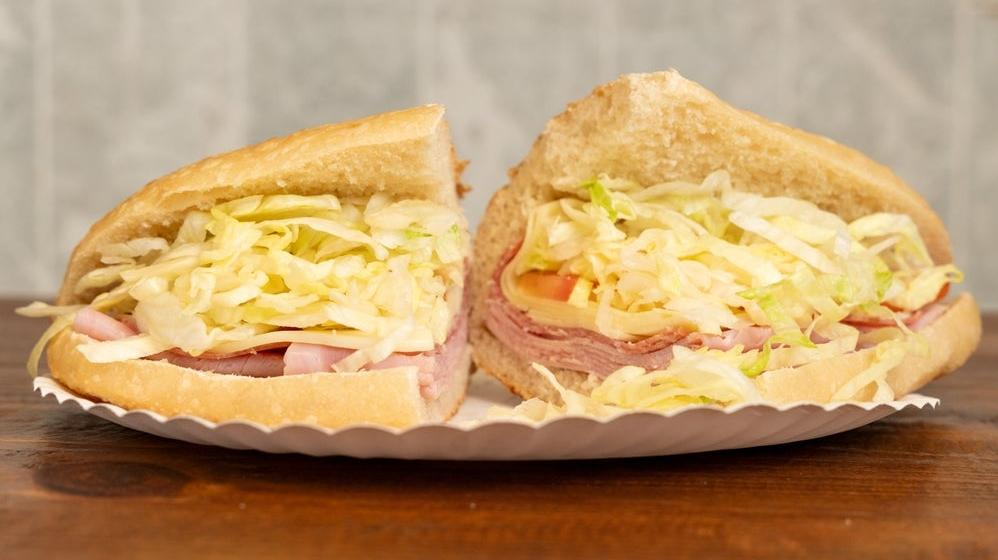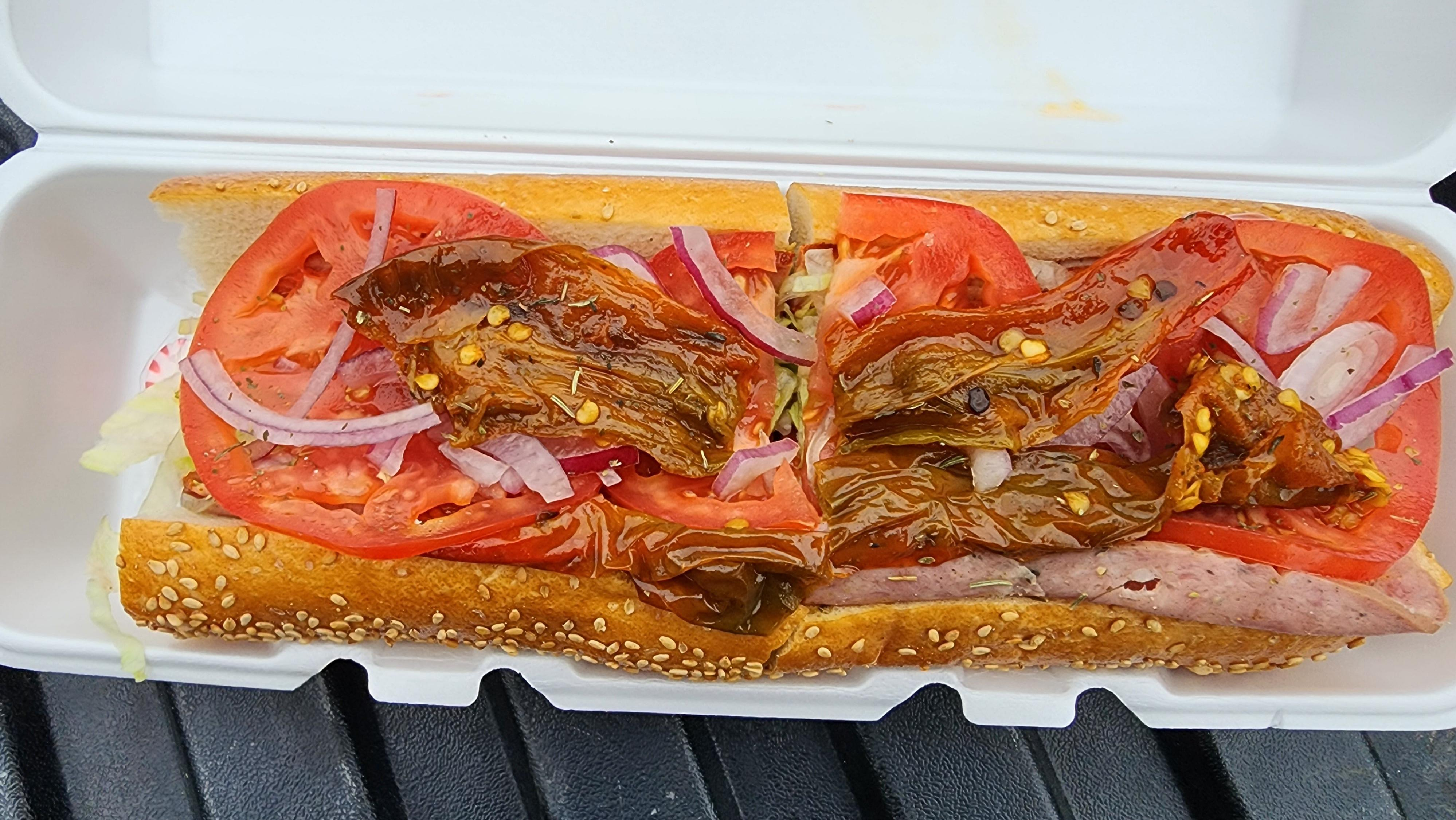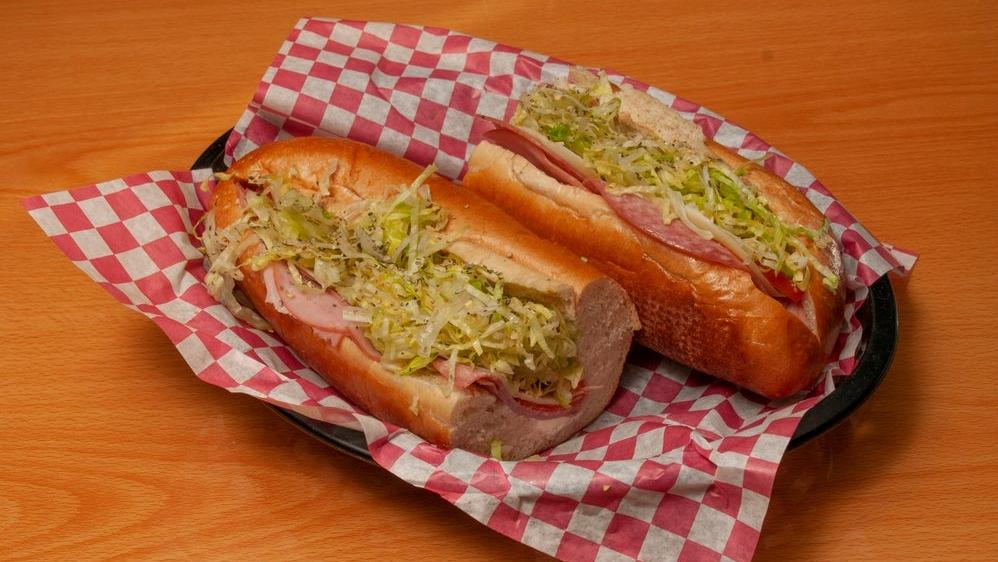10 Nonnegotiable Rules For A Proper Hoagie
Not just any sandwich can call itself a hoagie. Here are the qualities of a proper Philly one.
Hoagies, subs, grinders, heroes—each of these terms implies an informal subset of rules that must be followed. A grinder, for example, refers to a sandwich served hot. "Submarine sandwich" promises a soft roll, mayo, lettuce, and really any deli meat at all. And when someone says "hoagie," well, you should be thinking about the great city of Philadelphia.
Though common in New Jersey, the hoagie is a culinary linchpin of Pennsylvania, and one that Philadelphia in particular claims proudly. You'll find hoagies in Pittsburgh, too, but Philly is where the truly great ones live. I went there recently to eat as many hoagies as possible within 24 hours. My aim was to understand what separates a good hoagie from a great one, and also to understand the rules governing this iconic Pennsylvania sandwich. After speaking with multiple sources and trying countless hoagies, this is what I came up with.
The hoagie roll must not be fully sliced
Sometimes the best way to define something is to show an example of what it isn't. The Italian sandwich at Bub & Grandma's in Los Angeles (pictured above) features a soft, chewy seeded roll, and while it tastes good, it is cut clean through, leaving two distinct and disconnected slices of bread. As you can see, this causes the top of the sandwich to slide off. Is this a hoagie? No. It is not a hoagie if it needs a plate to catch the bread as it falls.
Joshua Noah Charles Agran, of Delco Rose Hoagies in Los Angeles, was born and raised in Havertown, Pennsylvania, and his approach to a good hoagie is all about getting the bread right—soft and chewy, but not too chewy—and he confirms that it can't be cut clean through.
"The roll must stay connected," he says. "It has to be rolled up nice and tight. That makes it all come together and makes it easier to eat. You can eat that bad boy in your car on your lunch break and stay relatively clean."
Hoagies should be able to withstand the motions of daily life. One should be able to wave it around in the air if they choose. There's a convenience to a tightly rolled hoagie, a comfort in knowing that it won't spill everywhere. As soon as you split the bread, it is no longer a hoagie. It's a submarine sandwich, or something else entirely.
You want seeds on your roll
The hoagie roll itself should be soft and chewy, more so than a sub roll—but not so chewy that your jaw grows tired. Dan's Food Market in Fishtown uses Amoroso's, a brand of crusty, squishy Italian roll. Primo Hoagies, Ricci's, and Fink's all use long, seeded hoagie rolls. The sesame seeds add extra flavor and texture, and also elevate the overall appearance of the hoagie. The roll doesn't have to be seeded, strictly speaking, but if you see a seeded roll, you're probably in for a good hoagie experience.
There should never be mustard. Ever.
"I've found Italian sandwiches here that use mustard," Joshua Noah Charles Agran of Delco Rose Hoagies says of the Los Angeles scene. "It's ridiculous." Mustard on hoagies just isn't done in Philly. Of the hoagies I ate at Ricci's, Primo Hoagies, Dan's Food Market, and Fink's, not one of them featured mustard.
A while back, celebrity chef David Chang posted on Threads about this exact phenomenon: "Can someone tell LA that you don't put mustard and mayo on an Italian sub?? (you know what and where I'm talking about). It can be tasty but you can't tell me it's a classical preparation."
Chang is speaking about Bay Cities in Santa Monica, which features a ton of condiments on its Godmother, an Italian sandwich revered by Angelenos. Mayo, mustard, and hot peppers make for a sloppy and noisy sandwich, and East Coast sandwich purists just aren't big fans of it.
Mustard is a bit too powerful to be included on a proper hoagie. End of discussion.
Mayo is welcome, but only in moderation
This is what most places in Philadelphia get right: Mayonnaise is actually okay to put on a hoagie. It doesn't have to be oil and vinegar alone; a thin layer of mayonnaise plays well with the other ingredients in an Italian, adding a subtle amount of richness to the sandwich. There is definitely such a thing as too much mayonnaise, however, and it's important not to approach that threshold.
Though I love the sandwich at Dan's Food Market, the copious amount of gloppy mayo didn't do it any favors—it could have used far less. Too much mayo, and the hoagie starts to feel completely weighed down. Less is more when it comes to mayonnaise, not only in a hoagie, but most other applications, too.
Some combination of shredded lettuce, onions, and tomato must appear
The hoagie wouldn't be a hoagie without the signature trio of lettuce, onions, and tomato, as freshly sliced vegetables play off of the savory deli meat in a way that makes both elements more interesting. Chopped iceberg packs a wonderful amount of freshness; thinly sliced onions are delightfully pungent; and a good tomato carries a deep, almost savory flavor. Without the presence of these things, it doesn't feel like much of a sandwich.
Oil & vinegar are absolutely necessary
More than mayonnaise, a good hoagie is defined by a few gentle squirts of olive oil and red wine vinegar. The richness and acidity build upon the flavor profile, but also serve to properly lubricate the sandwich. This is going to sound gross, but a proper hoagie should feel a little bit juicy. I'm so sorry to use that word, but it's true. It shouldn't be dry, and it shouldn't be downright wet, either. It should have a little juice.
I'm starting to think that dried oregano is very important to a good hoagie, too. It adds an earthy mustiness that complements the oil and vin—almost like a quick Italian dressing. If it's not included automatically, most places ask if you want it. You do.
Provolone should be sharp and shredded
Two of the best hoagies I had at Ricci's and Fink's both used sharp provolone cheese. Mild provolone just doesn't have the same flavor as the more funky, creamy sharp stuff. It's also best when shredded; from the looks of it, these shops take the provolone and pulse it a few times in a Robot Coupe to achieve a crumbled texture.
I don't think shredded sharp provolone is necessary to call it a hoagie officially, but this cheese is definitely the mark of a great one. The move for any great hoagie is chopped, sharp provolone. If you see it, you're about to eat a memorable sandwich.
The meat has to be Italian
A no-brainer, I'm sure, but something that must be stated for the sake of this article: the meat must be Italian. If there's no capicola, prosciutto, mortadella, salami, etc., then it's not really a hoagie. A submarine sandwich can literally be any meat, but a hoagie must feature Italian and Italian-American classics.
Hots, Yellow Hots, and Sweets should be on offer
At most hoagie joints in Philly, you can expect to be asked whether you want a combination of hots (short for hot red cherry peppers), yellow hots, or sweets.
The signature Italian at Fink's comes with coteghino (cured and sliced sausage), Genoa salami, capocollo, pepperoni, and chopped sharp provolone, plus freshly sliced tomatoes, onions, lettuce, olive spread, and Fink's homemade long hot peppers.
Those hot peppers are really spicy, by the way, so much so that they kind of sap the flavor of the other ingredients. I much preferred Ricci's Old World Italian hoagie, which instead featured sweet red peppers, aka sweets. These allowed the funky, savory nature of the hoagie to shine brighter. Hots and other hoagie spreads are somewhat divisive, but they should all be options. Which brings me to my final point...
A hoagie must offer the customer options
In my time investigating hoagies in Philly, I have found that most of the sandwich makers ask the customers a refreshing amount of questions. Everything is customizable; hoagies are all about choices.
At Dan's, they ask if you want mayo, oil, vinegar, lettuce, tomato, onion, salt, pepper, or oregano. That's, like, nine separate questions, and I said yes to all of them. Most of these sandwich makers aren't put off by this level of customization, either—they're eager to find the formula that fits your craving. The city of Philadelphia wants you to have it your way, and a proper hoagie build requires handing you the wheel. Just don't add any mustard. Christ.
